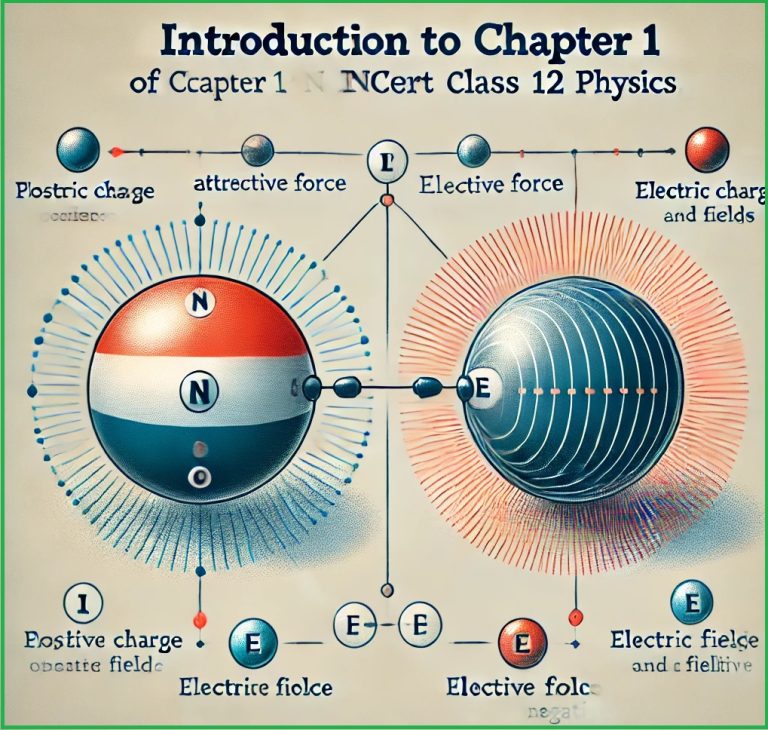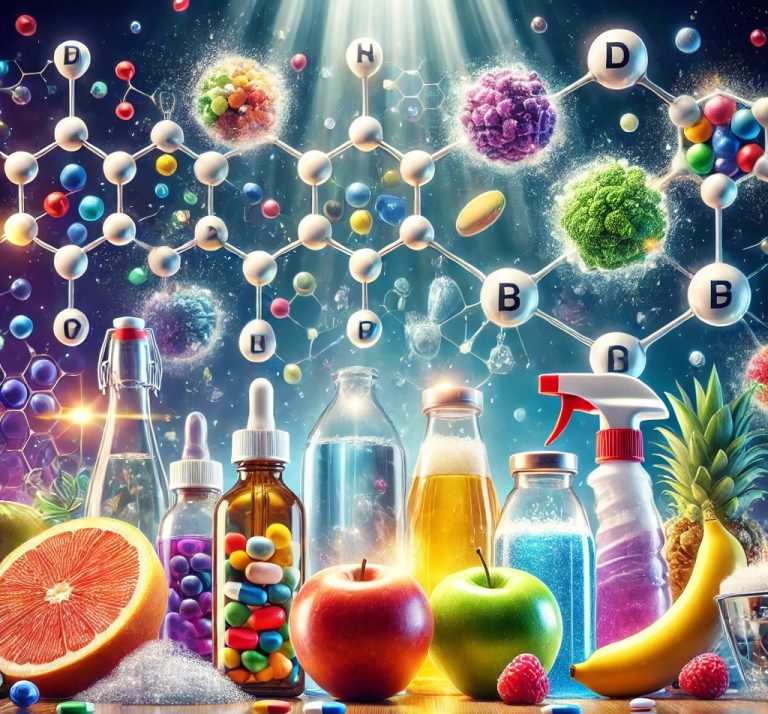Organisms and Populations: Understanding the Dynamics of Life
Introduction
In the vast world of ecology, the study of organisms and populations is fundamental in understanding how life sustains itself and interacts with its surroundings. Organisms—whether plants, animals, or microorganisms—are not isolated entities but part of larger systems of relationships within ecosystems. Populations, the groups of individuals of the same species living in a particular area, are dynamic entities that undergo various processes of growth, decline, and interaction with other species. Exploring the relationship between organisms and populations within ecosystems offers valuable insights into biodiversity, conservation, and the environmental challenges facing our planet.
What is a Population?
A population is defined as a group of individuals of the same species living and interacting in the same geographic area. These individuals share a common gene pool, meaning they can potentially interbreed and produce fertile offspring. Populations are dynamic, with individuals moving in and out of the group, being born and dying, which directly influences the size and structure of the population over time. The study of populations, known as population ecology, helps us understand patterns of survival, reproduction, migration, and the various factors that influence the growth or decline of these groups.
The structure of a population can be influenced by a variety of factors, including:
- Population Size: The total number of individuals in the population. This can be influenced by birth rates, death rates, immigration, and emigration.
- Density: How many individuals of a population are found in a specific area. For example, some areas may have a high density of individuals due to abundant resources, while others may have a low density because of environmental limitations.
- Age Structure: The distribution of individuals of different ages within a population. Populations with more young individuals typically experience faster growth, while populations with many older individuals may decline.
- Sex Ratio: The proportion of males to females in a population, which can influence reproduction rates.
Factors Influencing Population Growth
Populations grow through reproduction, and their size can be influenced by both intrinsic factors (like the reproductive rate of individuals) and extrinsic factors (like food availability, climate, or predators). Two fundamental models are used to understand population growth: exponential growth and logistic growth.
Exponential Growth
Exponential growth occurs when a population grows without any environmental limits, typically in ideal conditions. This is represented by the equation:N(t)=N0⋅ertN(t) = N_0 \cdot e^{rt}N(t)=N0⋅ert
Where:
- N(t)N(t)N(t) is the population size at time ttt,
- N0N_0N0 is the initial population size,
- eee is Euler’s number (approximately 2.718),
- rrr is the intrinsic rate of increase (birth rate minus death rate),
- ttt is time.
In exponential growth, the population doubles in size at regular intervals, creating a J-shaped curve when plotted over time. However, exponential growth is rarely observed in natural environments because resources are finite and environmental factors eventually come into play.
Logistic Growth
In contrast to exponential growth, logistic growth occurs when a population’s growth slows down as it approaches the carrying capacity of the environment. The carrying capacity (denoted as KKK) is the maximum number of individuals that the environment can support sustainably over time. The logistic growth model is represented by the equation:N(t)=K1+(K−N0N0)⋅e−rtN(t) = \frac{K}{1 + \left(\frac{K – N_0}{N_0}\right) \cdot e^{-rt}}N(t)=1+(N0K−N0)⋅e−rtK
In this model, growth starts off exponential but slows as resources become limited, leading to an S-shaped curve on a graph. This model reflects the more common scenario in natural populations, where growth rates decrease as the population size approaches the environment’s carrying capacity.
Factors Affecting Population Size and Structure
Population dynamics—how populations change over time—are influenced by a variety of factors, both abiotic (non-living) and biotic (living). These factors can either promote population growth or limit it.
Abiotic Factors:
Abiotic factors include environmental conditions that affect the survival and reproduction of organisms. Key abiotic factors include:
- Temperature: Organisms are adapted to survive within specific temperature ranges. Extreme temperatures can limit the geographical distribution of species.
- Water: Availability of water is crucial for survival. Species in arid regions have evolved adaptations to conserve water, while aquatic species are constrained by water quality and temperature.
- Light: Light affects photosynthesis in plants and energy availability in ecosystems. The amount of sunlight can determine the types of organisms that thrive in an area.
- Soil Nutrients: The quality of soil (its nutrient content and pH) plays a major role in plant growth, which in turn affects herbivore and predator populations.
Biotic Factors:
Biotic factors include interactions between organisms that influence population size. These include:
- Predation: Predators reduce the number of prey in a population, influencing the size and structure of prey populations.
- Competition: Organisms compete for limited resources such as food, space, and mates. Competition can be intra-specific (within the same species) or inter-specific (between different species). Intense competition can limit population growth.
- Symbiosis: This includes mutualism (both species benefit), commensalism (one benefits, the other is unaffected), and parasitism (one benefits at the expense of the other). These interactions can influence population densities and survival rates.
Population Interactions
Populations do not exist in isolation; they are embedded within ecosystems, interacting with other populations in complex ways. These interactions can be categorized into several types:
Predation
Predation involves one organism (the predator) hunting and killing another (the prey) for food. This interaction has significant effects on population dynamics. In a predator-prey relationship, the populations of both predator and prey exhibit cyclical patterns. For instance, when the prey population increases, the predator population also rises due to an abundant food source. However, as the predator population grows, it reduces the prey population, which in turn causes the predator population to decline due to a lack of food.
A classic example of predator-prey dynamics is the relationship between the lynx and snowshoe hare. When the hare population increases, the lynx population also increases, but once the lynx population becomes too large, the hare population declines, leading to a decrease in lynx numbers.
Competition
Competition occurs when individuals of the same or different species vie for the same resources. Competition can be:
- Intraspecific competition: Competition among individuals of the same species (e.g., lions fighting for territory or food).
- Interspecific competition: Competition between individuals of different species (e.g., deer and rabbits competing for the same vegetation).
Intense competition can lead to a decrease in population size or the exclusion of one species from a particular niche. This concept is known as the competitive exclusion principle, which states that two species competing for the same resources cannot coexist indefinitely in the same ecological niche.
Mutualism
In mutualistic relationships, both species benefit from the interaction. For example, bees and flowers engage in mutualism; the bees pollinate the flowers while obtaining nectar for themselves. This relationship supports the reproductive success of both species and can help maintain population stability.
Parasitism
Parasitism involves one organism (the parasite) benefiting at the expense of another (the host). Parasites often do not kill their hosts immediately but may weaken them over time, affecting their reproductive success. Common examples of parasitism include ticks on mammals and tapeworms in the intestines of animals.
Human Impacts on Populations
Human activities have significant and often detrimental effects on populations and ecosystems. These activities include habitat destruction, pollution, climate change, and the introduction of invasive species.
Habitat Destruction and Fragmentation
Human activities like deforestation, urbanization, and agricultural expansion destroy natural habitats, leading to population declines and even extinction. Fragmentation of habitats into smaller, isolated patches reduces the genetic diversity of populations and makes it harder for species to find mates or resources.
Climate Change
Climate change, driven by human-induced factors such as greenhouse gas emissions, is altering temperature and precipitation patterns worldwide. Species must adapt to these changes, migrate, or face population decline. Some species are already shifting their ranges toward cooler regions or higher altitudes, while others are facing extinction as their environments become inhospitable.
Invasive Species
Human trade and travel have facilitated the spread of non-native species to new regions. These invasive species often outcompete native species for resources, spread diseases, and disrupt local ecosystems. For example, the introduction of the zebra mussel to North America has caused significant ecological and economic damage by outcompeting native species and clogging water infrastructure.
Conservation Efforts
To mitigate the effects of human activity, conservation efforts focus on protecting natural habitats, preserving biodiversity, and restoring ecosystems. Strategies include creating protected areas, establishing wildlife corridors, and implementing sustainable resource management practices. International agreements like the Convention on Biological Diversity aim to address global threats to biodiversity.
Here are 10 questions with answers and explanations related to organisms and populations:
1. What is a population in ecological terms?
Answer: A population is a group of individuals of the same species that live in a specific geographic area and can interbreed. Populations are characterized by factors such as size, density, age structure, and sex ratio. Understanding populations helps us study their growth, interactions with the environment, and responses to various ecological pressures.
Explanation: Populations are the basic units of ecological study because they represent how species interact with one another and their environment. By observing population dynamics, ecologists can assess the health of species and their environment.
2. What factors influence population growth?
Answer: Population growth is influenced by:
- Birth rate: The number of individuals born in a population.
- Death rate: The number of individuals that die in a population.
- Immigration: The arrival of individuals from other areas.
- Emigration: The departure of individuals to other areas.
Explanation: Population growth depends on the balance between these factors. High birth rates and low death rates lead to faster growth, while high death rates or emigration slow down growth. Environmental conditions, resource availability, and interactions with other species also play important roles.
3. What is carrying capacity?
Answer: Carrying capacity is the maximum number of individuals of a species that an environment can support indefinitely, given the available resources such as food, shelter, and water.
Explanation: The carrying capacity of an environment is determined by its resources and the needs of the species. When a population exceeds the carrying capacity, it can lead to resource depletion, competition, and population decline.
4. What are the differences between exponential and logistic growth?
Answer:
- Exponential growth occurs when a population grows without any resource limitations. It results in a J-shaped curve where the population size increases rapidly over time.
- Logistic growth occurs when population growth slows as it approaches the environment’s carrying capacity, resulting in an S-shaped curve.
Explanation: Exponential growth happens when resources are abundant, and the population has no limiting factors. However, in most natural environments, limiting resources cause growth to slow and stabilize, leading to logistic growth.
5. What is the significance of age structure in populations?
Answer: Age structure refers to the distribution of individuals of different ages within a population. It is crucial in predicting future population growth. A population with many young individuals is likely to grow rapidly, while a population with a large proportion of older individuals may experience slower growth or decline.
Explanation: Age structure helps in understanding the reproductive potential of a population. A healthy age distribution ensures long-term population stability and sustainability, while an imbalance may signal problems like aging populations or reproductive issues.
6. How do competition and predation affect population dynamics?
Answer:
- Competition: Occurs when individuals or species compete for limited resources such as food, water, and territory. It can reduce the survival and reproduction rates of competing individuals.
- Predation: Involves one species (the predator) hunting and killing another species (the prey) for food. It affects prey populations by limiting their numbers and can regulate the abundance of both predator and prey.
Explanation: Both competition and predation create dynamic interactions that influence population size and distribution. For example, intense competition can reduce a population’s growth rate, while predation can control the abundance of prey species.
7. What is symbiosis, and what types are there?
Answer: Symbiosis is a close ecological relationship between two different species. The three main types of symbiotic relationships are:
- Mutualism: Both species benefit (e.g., bees pollinating flowers).
- Commensalism: One species benefits, and the other is unaffected (e.g., barnacles on a whale).
- Parasitism: One species benefits at the expense of the other (e.g., ticks feeding on a dog).
Explanation: Symbiotic relationships shape the structure of ecosystems by influencing how species interact and share resources. These interactions are important in maintaining biodiversity and ecological balance.
8. What is a niche, and how does it relate to populations?
Answer: A niche is the role or function of an organism within its environment, including its interactions with other species and its use of resources. It includes aspects like what the organism eats, where it lives, and how it reproduces.
Explanation: Populations occupy different niches in ecosystems, which reduces competition and allows species to coexist. Niche differentiation helps maintain biodiversity, as species adapt to their specific roles within their habitats.
9. What is an invasive species, and why are they harmful?
Answer: An invasive species is a non-native species that, when introduced to a new environment, causes significant harm to the native species and ecosystem. They often outcompete native species for resources, spread diseases, or disrupt ecological processes.
Explanation: Invasive species can rapidly grow and establish themselves because they often lack natural predators or competitors in the new environment. This can lead to the decline of native species, loss of biodiversity, and changes to ecosystem functions.
10. How do human activities affect populations and ecosystems?
Answer: Human activities such as deforestation, urbanization, pollution, climate change, and overexploitation have profound effects on populations and ecosystems. These activities can destroy habitats, cause species extinction, and disrupt ecological balances.
Explanation: Humans are a major force in altering ecosystems. Deforestation, for example, destroys habitats for many species, while climate change can shift temperature and precipitation patterns, affecting species distributions. Conservation efforts aim to mitigate these impacts and protect ecosystems for future generations.
These answers offer insights into key ecological concepts related to populations, their growth, and interactions within ecosystems. Understanding these processes is essential for managing biodiversity and addressing environmental challenges.






